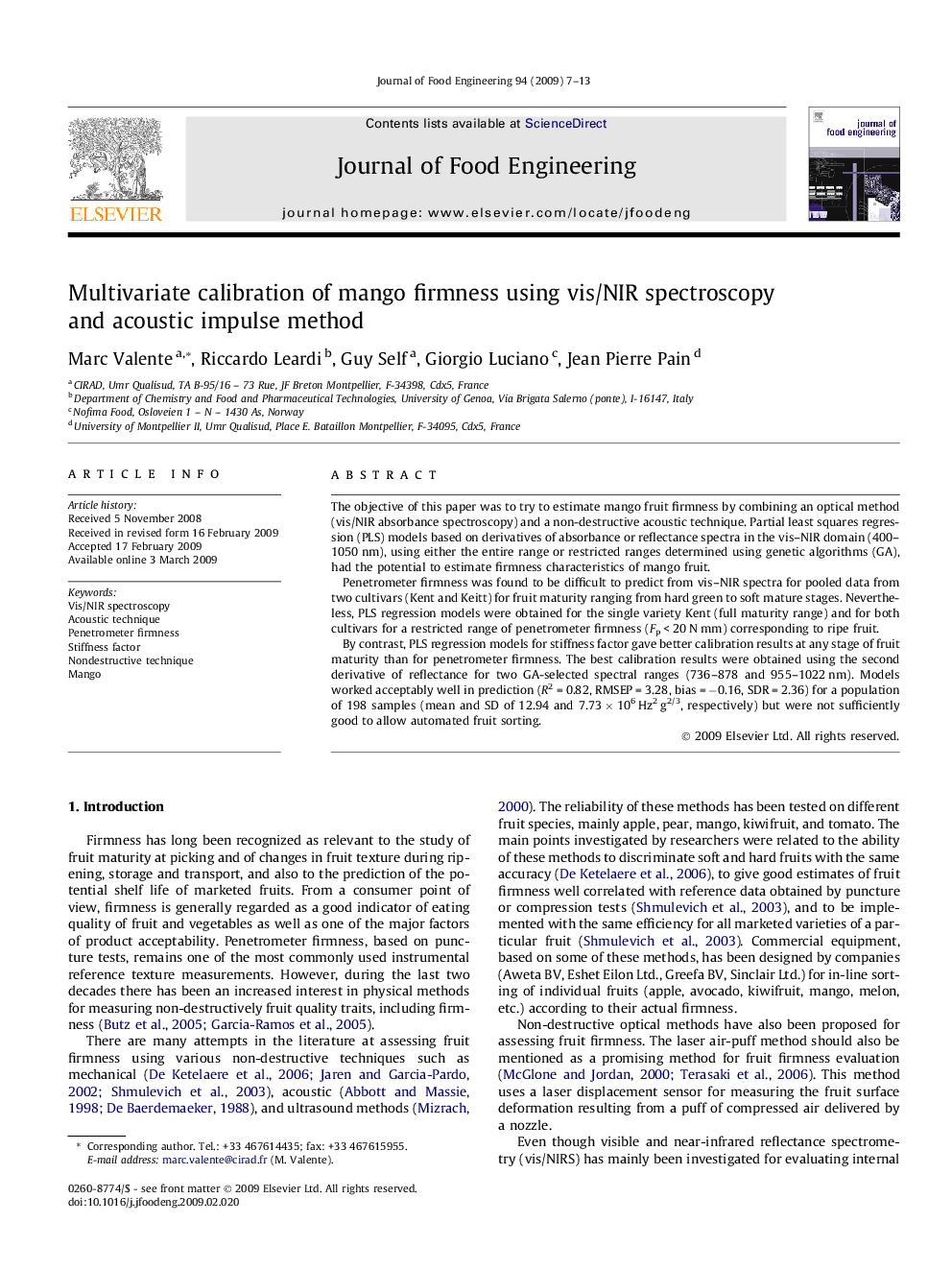| Article ID | Journal | Published Year | Pages | File Type |
|---|---|---|---|---|
| 224049 | Journal of Food Engineering | 2009 | 7 Pages |
The objective of this paper was to try to estimate mango fruit firmness by combining an optical method (vis/NIR absorbance spectroscopy) and a non-destructive acoustic technique. Partial least squares regression (PLS) models based on derivatives of absorbance or reflectance spectra in the vis–NIR domain (400–1050 nm), using either the entire range or restricted ranges determined using genetic algorithms (GA), had the potential to estimate firmness characteristics of mango fruit.Penetrometer firmness was found to be difficult to predict from vis–NIR spectra for pooled data from two cultivars (Kent and Keitt) for fruit maturity ranging from hard green to soft mature stages. Nevertheless, PLS regression models were obtained for the single variety Kent (full maturity range) and for both cultivars for a restricted range of penetrometer firmness (Fp < 20 N mm) corresponding to ripe fruit.By contrast, PLS regression models for stiffness factor gave better calibration results at any stage of fruit maturity than for penetrometer firmness. The best calibration results were obtained using the second derivative of reflectance for two GA-selected spectral ranges (736–878 and 955–1022 nm). Models worked acceptably well in prediction (R2 = 0.82, RMSEP = 3.28, bias = −0.16, SDR = 2.36) for a population of 198 samples (mean and SD of 12.94 and 7.73 × 106 Hz2 g2/3, respectively) but were not sufficiently good to allow automated fruit sorting.
